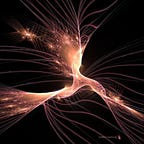Book Summary: The Molecule of More: How a Single Chemical in Your Brain Drives Love, Sex, and Creativity — and Will Determine the Fate of the Human Race
by Daniel Z. Lieberman and Michael E. Long
This book explores the impact of dopamine, a neurochemical that influences desire, ambition, and novelty-seeking behaviour.
Here’s a summary of the most valuable points:
Dopamine, the molecule of more
Dopamine is described as the “molecule of more”. It’s linked to the drive for future rewards, novelty, and exploration. It’s not about pleasure but about the pursuit of what we desire.
Example: When a student stays up late to study for an important exam, foregoing immediate pleasures like sleep or socializing, they’re driven by dopamine’s promise of a future reward — in this case, a good grade.
Additional Example: An entrepreneur who sacrifices a stable job to start their own business, driven by the prospect of future success, is being driven by a dopamine response.
Two systems of the brain
The book emphasizes that there are two systems of the brain: one driven by dopamine that focuses on the future (the ‘wanting’ system) and another that focuses on the here and now (the ‘liking’ system). Both are necessary, but an imbalance can lead to issues.
Example: An artist may be driven by a dopamine-fueled vision of creating a masterpiece (the 'wanting' system). However, if they don’t also appreciate the process of painting and the small achievements along the way (the 'liking' system), they could end up frustrated and dissatisfied.
Additional Example: A workaholic, driven by the desire to climb the career ladder (the 'wanting' system), might neglect their current happiness and relationships (the 'liking' system), leading to burnout or personal issues.
Dopamine and relationships
Dopamine can both kindle and kill relationships. In the early stages, it can create a rush of excitement and anticipation. However, as relationships mature and become more familiar, it’s other neurotransmitters like oxytocin that maintain long-term bonds. Dopamine can drive us to seek novelty, potentially destabilizing established relationships.
Example: A couple in the early stages of their relationship may experience a 'honeymoon period' full of excitement and novelty (driven by dopamine). But if one partner is continually seeking novelty and can’t appreciate the comfort and familiarity of their established relationship (a more oxytocin-driven experience), this could strain the relationship.
Additional Example: The thrill of a new friendship can be dopamine-driven, but maintaining that friendship over the years requires appreciating shared memories and the comfort of familiarity, a function of other neurotransmitters like oxytocin.
The dark side of dopamine
High dopamine levels can lead to addiction, as the brain continually seeks more of the substances that cause dopamine release. Dopamine can also be linked to mental health issues, such as bipolar disorder and schizophrenia.
Example: A person might start using a recreational drug casually, driven by the dopamine surge it provides. However, over time, they might become addicted, as their brain craves more dopamine release the drug provides.
Additional Example: Someone with bipolar disorder may experience manic phases characterized by extremely high levels of activity and goal-directed behaviour, potentially fueled by high dopamine levels.
Dopamine is very important, it can lead to both your success and your demise. You just need to be aware of that and understand the cases where it works in your favour and when it doesn't.
Just like any tool.
